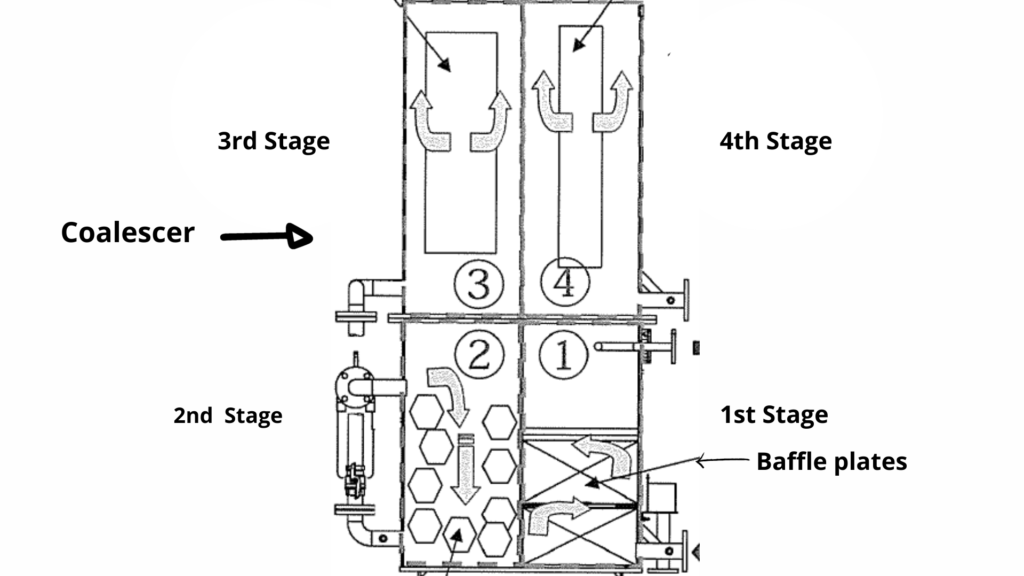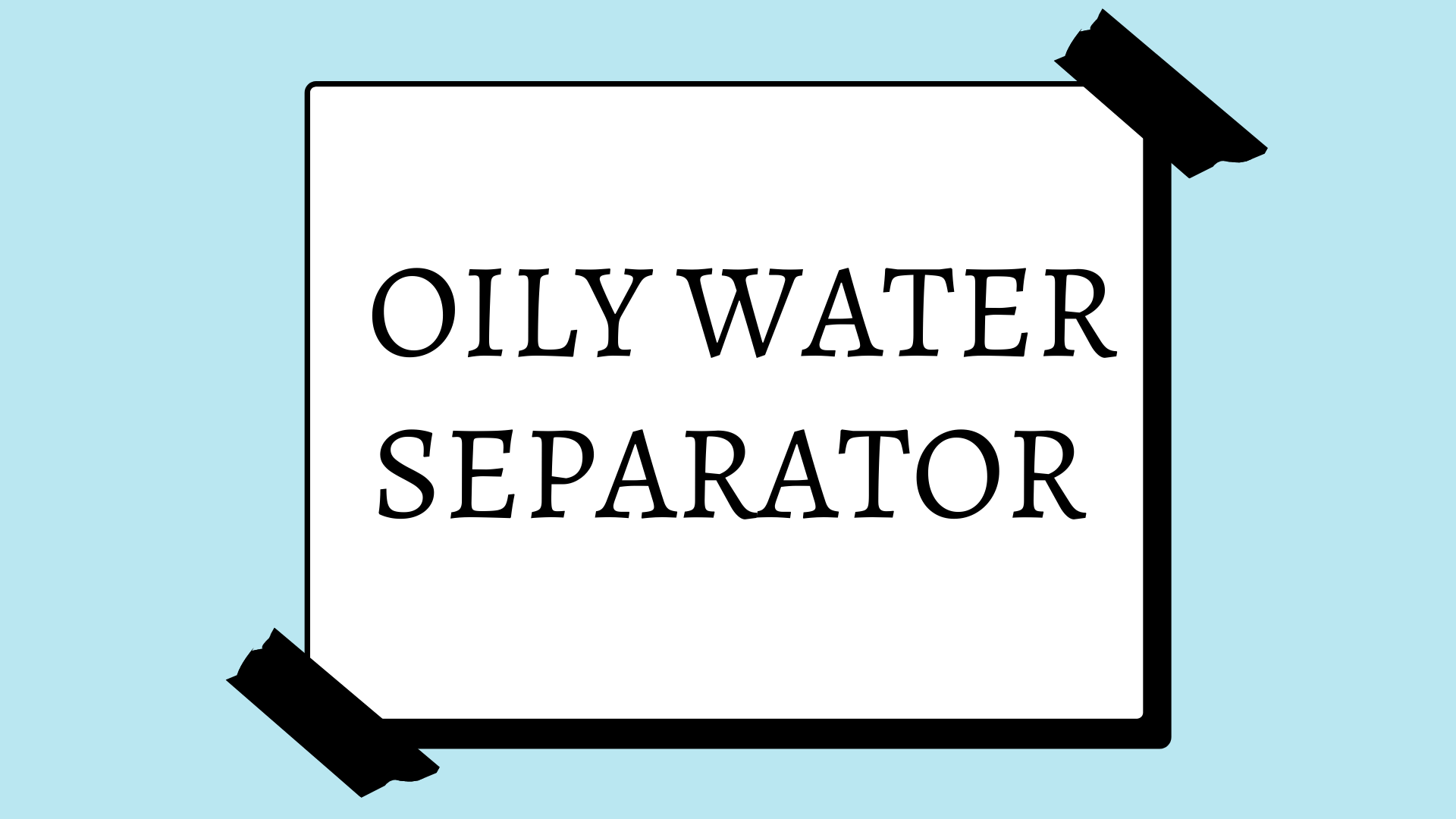An Oily water separator is used on ships to discharge bilges overboard when any ship of 400 GT and above, is sailing en route. According to Marpol the oil content of the discharge bilge must be less than 15 ppm and must be processed through oil filtering equipment before discharging overboard. Here the Oily Water Separator comes into the picture
Working of an Oily Water Separator

The oily bilges on ships are stored in bilge tank and from time to time they are being discharged overboard. Bilge Pump takes suction from the Bilge tank and pumps it to OWS.
Mainly OWS is divided into four basic parts or stages, let’s see each stage part by part for better understanding.
1st Stage – Here the basic separation of oil from bilge water takes place and it depends upon the specific gravity (relative density ) of the oil. The separation is done through multiple parallel plates which are placed in the separating compartments in two layers. They are able to filter particles of oil that are larger than 60 microns in size.
2nd Stage – This stage is filled up with the hard type of emulsion breaker. It not only breaks the emulsion but also the external material in the bilge is filtered by the breaker.
3rd Stage – This stage contains a coalescer which allows small particles of oil to coagulate and become bigger in size and thereby float to the surface. They are made of stainless steel and heat /corrosion resistant glass fibre and are capable of separating oil of 15-20 micron particles.
4th Stage – The 4th stage also comprises a coalescer that coagulates minor particles of oil that were not separated in the 3rd stage and become bigger in size and thereby float to the surface.
After the 4th stage, the filtering process is completed but the water is not thrown directly into the sea. Oil Content Monitor (OCM) is set at 15 ppm.
If the oil content is less than 15ppm then only the overboard valve opens and water goes overboard.
If the oil content is more than 15 ppm then the 3-way valve gets activated and the alarm sound in the Engine room and simultaneously the solenoid valve gets activated and open the bilge tank valve and closes the overboard valve.
